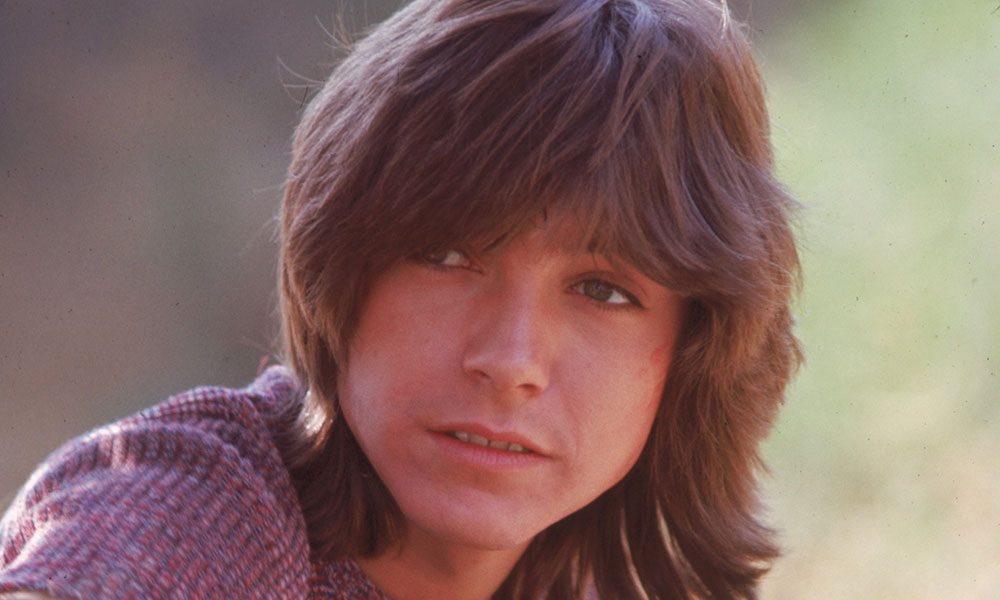
A tender mask dropped in slow motion—“I Am a Clown” lets David Cassidy step out from the posters and the TV lights to admit there’s a real boy behind the greasepaint, bruised but brave enough to speak.
Key facts up front. First heard on Cassidy’s debut solo album Cherish (early 1972), “I Am a Clown” became a stand-alone hit in the U.K. in March 1973, issued as a double-A (often a three-track maxi) with “Some Kind of a Summer”—and it climbed to No. 3 on the Official Singles Chart in April, spending much of that spring in the Top 40. It was not released as a U.S. single, but the song resonated widely in Europe, reaching No. 7 in Austria, and showing in several territories during 1973.
Part of what made the record feel different—then and now—is where it came from and how it was built. Cherish was produced by Wes Farrell at Western Recorders in Hollywood, drawing on a first-call Los Angeles crew (the likes of Hal Blaine, Larry Carlton, Louie Shelton, Tommy Tedesco, Mike Melvoin and others) to give Cassidy a more dramatic, adult frame than he’d had with The Partridge Family. On the U.K. single, the song was introduced by a short spoken prologue—a theatrical touch that underlined the lyric’s confession: the performer’s painted smile isn’t the whole story.
Authored by Tony Romeo—the same writer who handed Cassidy his signature Partridge Family smash “I Think I Love You”—“I Am a Clown” is, at heart, a note passed from the wings to the front row. Romeo’s melody moves like a hand to the chest: simple, deliberate, letting Cassidy lean into long phrases and the sighing rise-and-fall of the chorus. The arrangement surrounds him without crowding him—piano and strings tracing the outline of a torch ballad while the rhythm section keeps its pulse soft and steady. Even if you first heard it on a kitchen radio half a century ago, you can likely still feel where the harmony opens out and the voice lifts, as if he’s taking one last breath before saying the thing that costs.
The story behind its release adds a satisfying bit of record-biz poetry. Bell Records in Britain paired “I Am a Clown” with “Some Kind of a Summer” (and, on some pressings, “Song for a Rainy Day,” which Cassidy co-wrote with Kim Carnes) and cut the disc at 33⅓ RPM—a short-lived U.K. “MABEL 4” maxi format that fit three tracks on a 7-inch. It worked. Across April 1973 the single held tight near the top of the chart (peaking at No. 3), a reminder that Cassidy’s solo ballads could carry on their own steam, away from the sitcom halo.
What does the song mean for listeners who have lived with it? The title’s metaphor is plain enough—the clown who makes you laugh while hiding his hurt—but Cassidy’s reading nudges it somewhere tenderer. He isn’t asking for pity so much as recognition: the hope that someone will see the person inside the performance and stay. There’s dignity in that admission, and a rare kind of courage for a 22-year-old star whose face stared down from bedroom walls across half the world. You can hear him step closer to the microphone on the bridge, the vibrato narrowing as if he’s telling a secret he’s rehearsed his whole life and finally decided to share.
For many older fans, that’s why “I Am a Clown” lingers. It captures a passage a lot of us have walked: learning that the roles we play—parent, partner, provider, the one who keeps the room light—don’t cancel our private aches. We show up anyway. We try to love honestly anyway. Cassidy’s performance honors that ordinary bravery. If the early ’70s were a season when innocence met its limits, this song doesn’t scold or flinch; it lights a small lamp and invites you to sit with what’s true.
There’s also the broader career context. Cherish announced David Cassidy as a solo artist with an ear for theatrical balladry and a taste for top-shelf players; “I Am a Clown” became the album cut that fans wouldn’t let go of, eventually forced into single status by sheer affection. That U.K. No. 3 peak, and the additional chart life in places like Austria, weren’t just numbers; they were proof that the audience heard the man behind the poster and wanted more of him. And even if American radio never had a proper single to spin, the song’s afterlife—compilations, set lists, those late-night dedications—has been the kind that matters: carried in people’s rooms and cars, revisited when the mask feels heavy and the heart needs company.
Finally, a small note for the discography-minded: that British pressing’s companion tracks help tell the tale. “Some Kind of a Summer,” written by Dave Ellingson, gives the flip a bright, forward lean; “Song for a Rainy Day,” co-written by Cassidy and Kim Carnes, adds a reflective counterweight—three facets of the same artist on one 7-inch, the public smile and the private voice sharing space. Together they make a little portrait of a young star pushing past his caricature, asking to be heard clearly—no costume required.
If you put it on today, listen for the hush before the first line, the small intake of breath. That’s the sound of a page turning. And when the last chord fades, it leaves the kind of quiet only a truth can leave—the quiet that fills a room when someone finally says who they are.